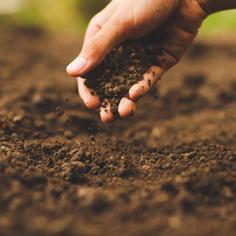Habitat Gardens in hobsons bay
A Habitat Garden that attracts wildlife can be easily achieved.
Indigenous plants increase local biodiversity and provide habitat and food for local wildlife whilst requiring less watering, fertilisers and pesticides. Designing any garden can be daunting so start small. Incorporate local plants already adapted to climatic conditions and follow these six simple steps to create a Habitat Garden.

1. 2.
Go for a walk
Take a stroll through your garden and neighbourhood and find out what wildlife already exists within your area. Study the native plants that thrive locally in open spaces and gardens as they are adapted to local climatic conditions. Plants don’t exist in isolation so take note of the layers of plants. Notice the continuous layer of vegetation starting from ground covers, small plants such as grasses and wildflowers, larger shrubs and then the overstorey created by trees. Creating a Habitat Garden provides shelter and food for wildlife, establishes greater genetic diversity and broader ecosystem connectivity.
Start Small and look at your garden
A smaller area is more manageable when beginning the Habitat Garden journey.

Create a site analysis of your garden
Climatic conditions
•Sun and shade areas
• Which way the site is facing ie. where is North? A North facing garden will be hotter and drier

Elements to be removed or retained
•Existing plants
•Pedestrian or vehicle areas
•Exisitng infrastructure
Neighboring properties
•Location of buidlings
•Location of trees
Soil type
•Clay, sand, loam
Plan your Habitat Garden
What style of garden do you want?
Ie. Contemporary, cottage, natural
What wildlife do you want to attract?
Ie. Birds, insects, reptiles

Plant consideration to suit your garden
•Style of garden
•Size of garden
• Plant requirements
ie; water, soil type, sun
• Plant growth patterns
ie; height, width
• Wildlife requirements
ie; food, shelter
Visit your local indigenous plant nursery for further assistance on plant selection

Exisitng plants do not need to be removed
A quick and easy way to enhance your garden is to prune the lower branches of your trees and shrubs and underplant with ground covers and wildflowers.
Not all existing plants need to be removed. Keeping large plants and shrubs in your garden will protect the young seedlings as they establish and keep the weeds down. Existing plants can provide habitat, shelter and food for local wildlife. Gradually replace existing or weedy plants as indigenous plants establish.
 3. 4.
3. 4.


